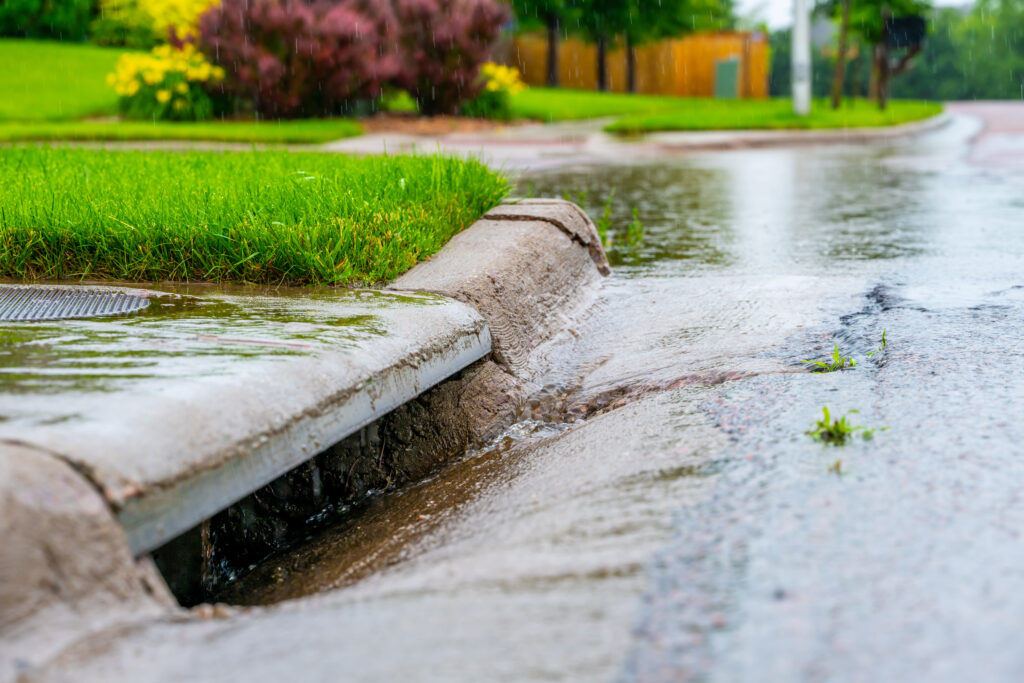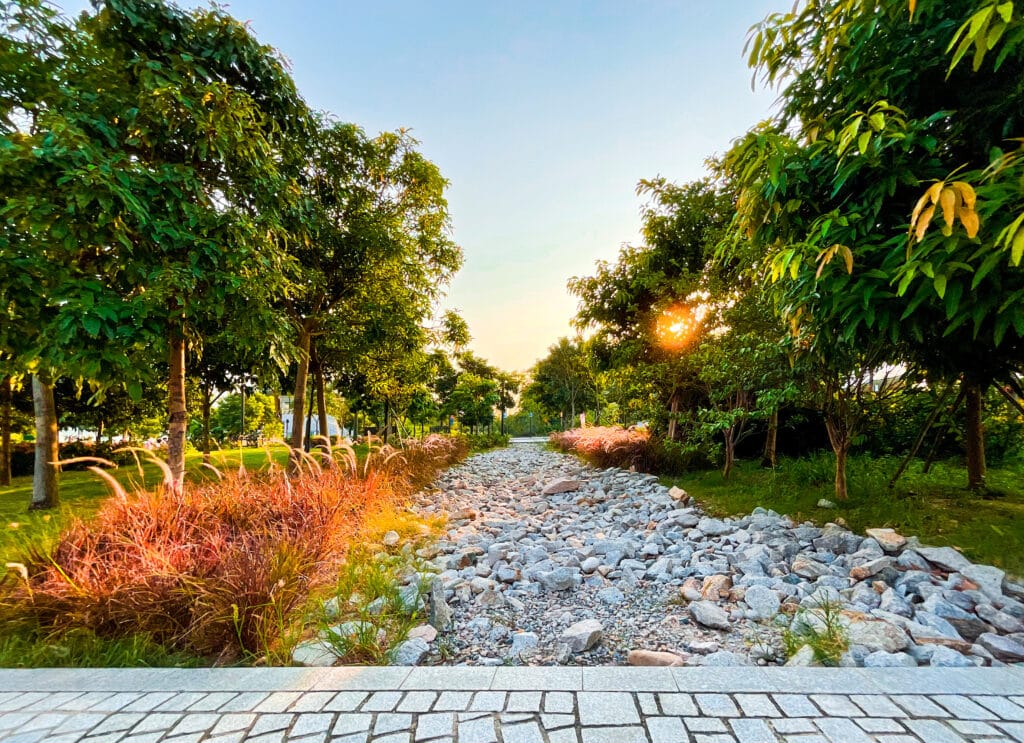

If you’ve ever walked through a park after a heavy rain or noticed water quickly disappearing from a parking lot, you’ve seen stormwater management in action. While it might not always be visible, these systems play a vital role in keeping our communities safe, sustainable, and resilient.
Across Pennsylvania and New Jersey, engineers, planners, and municipalities are finding creative ways to manage runoff – balancing infrastructure needs with environmental protection. Here are a few examples of stormwater management solutions that blend seamlessly into everyday life.
Permeable Pavement: Turning Hard Surfaces into Smart Surfaces
Traditional pavement sends rainwater rushing toward storm drains, but permeable pavement lets water soak through the surface and filter into the ground below.
You’ll often find it in parking lots, driveways, and walkways at municipal buildings, shopping centers, or schools. Not only does it reduce flooding, but it also helps recharge groundwater and minimize pollutants that enter local waterways.
Underground Detention Systems: The Hidden Workhorses
Beneath some parking lots, athletic fields, and playgrounds, there may be large underground chambers that temporarily store rainwater during heavy storms. These detention systems help prevent downstream flooding and give local drainage systems time to handle increased flows.
They’re a perfect example of how modern stormwater engineering combines practicality with minimal visual impact.

Rain Gardens and Bioretention Areas: Nature’s Filters
Those beautifully landscaped areas filled with native plants aren’t just for aesthetics – they’re rain gardens or bioretention basins designed to capture and filter stormwater runoff.
These features slow down stormwater, allowing plants and soil to naturally remove sediments and nutrients before the water flows into streams and rivers. Many Pennsylvania and New Jersey townships now encourage rain gardens in both public spaces and private developments as part of green infrastructure initiatives.
Vegetated Swales and Basins: Managing Water the Green Way
Instead of relying solely on pipes and concrete channels, many communities are turning to vegetated swales and basins. These are shallow, grassy areas that guide and filter stormwater rather than quickly passing it through to the stormwater system.
You might see them along roadways, parking lot edges, or near playgrounds, quietly doing their job to slow, cool, and clean the water before it reaches local waterways.
Smart Stormwater Design Builds Resilient Communities
As climate patterns shift and heavy rain events become more frequent, well-designed stormwater systems are more important than ever. The solutions we see, both visible and hidden, work together to protect properties, reduce flooding, and improve water quality for everyone.
At Carroll Engineering Corporation, we’re proud to partner with both public and private clients throughout Pennsylvania and New Jersey to design and implement effective, sustainable stormwater management systems that support both people and the environment.
Interested in learning more about how our innovative stormwater solutions can benefit your next project? Get in touch with our team today! For public projects, reach out to Chris Peterson, P.E. at cpeterson@carrollengineering.com or (215) 422-3218. For private projects, reach out to John Koutsouros, P.E., VP at jkoutsouros@carrollengineering.com or (215) 268-3808.
